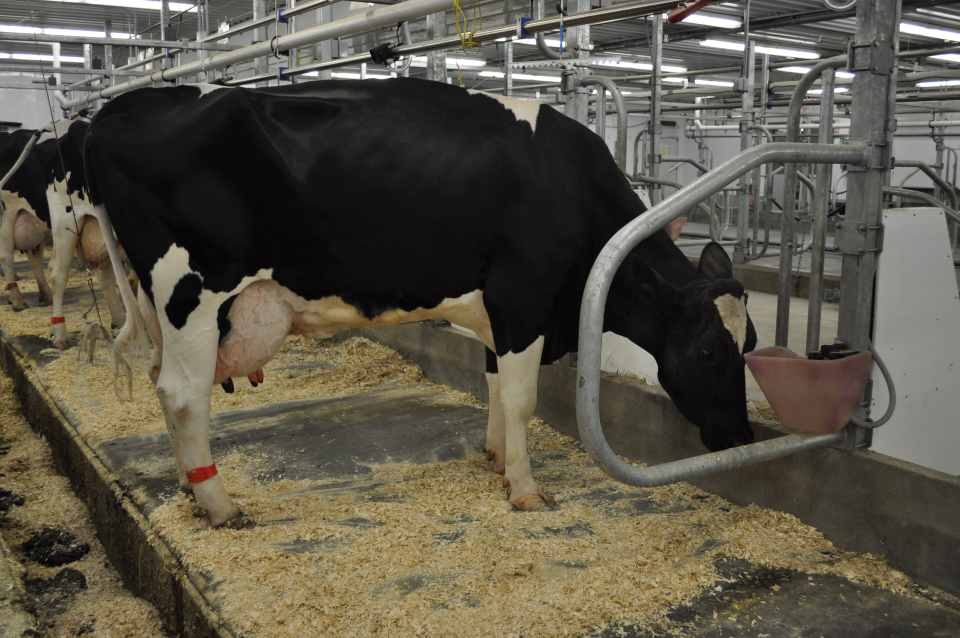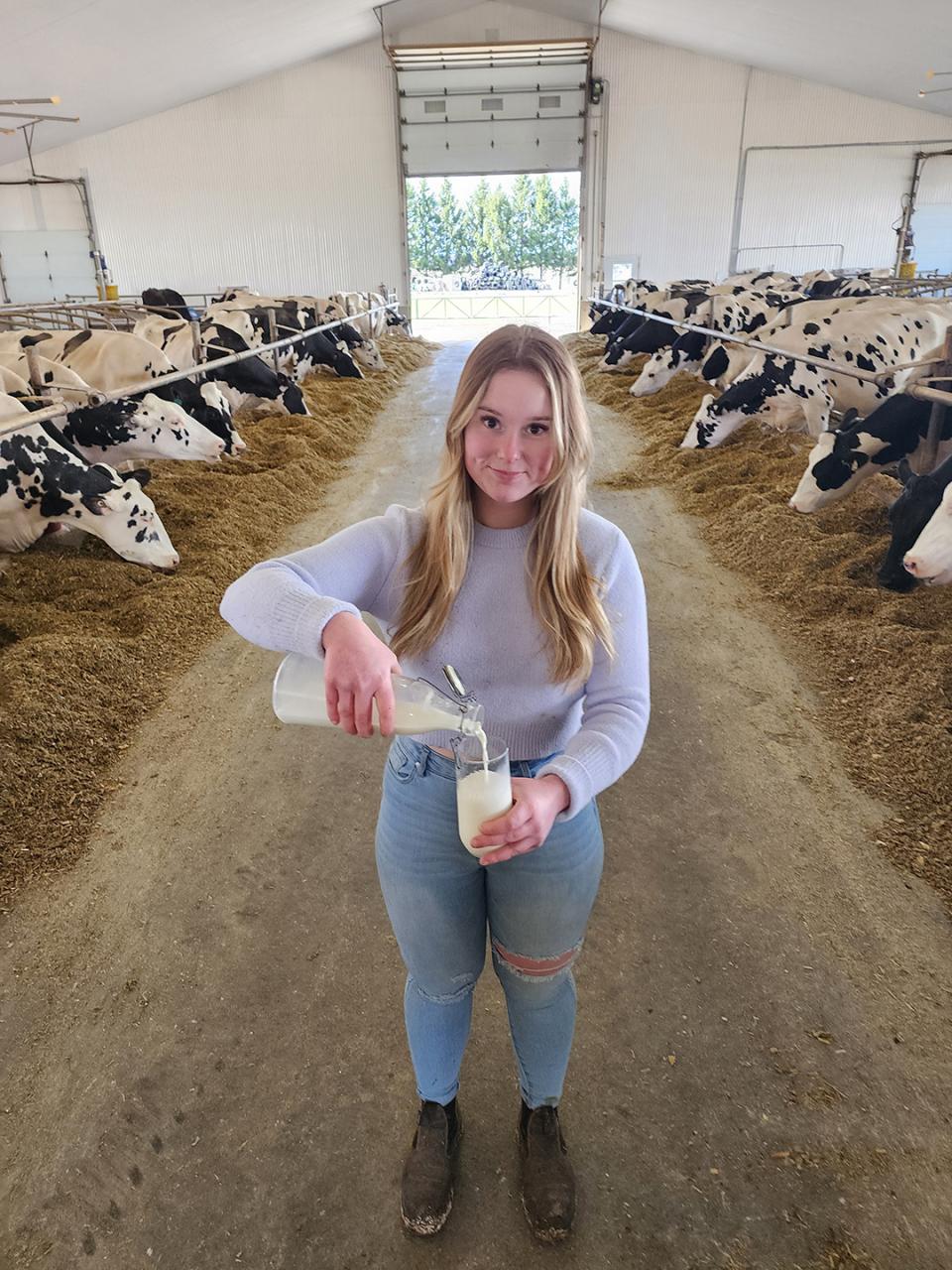Keeping animals healthy is a priority for dairy farmers. That is why they pay particular attention to their herds, providing their dairy cows with a diet and barn adapted to their needs. Farmers watch over the health of their herds and of each individual cow with the help of a veterinarian who provides advice to keep animals healthy and prevent health problems. Preventive measures include vaccines, hygiene, ventilation, and other means to protect the health status of cows.
But just like any other animal or human being, a dairy cow can sometimes get sick.1 In such cases, farmers call on a veterinarian to make a diagnosis. Only veterinarians can prescribe an antibiotic, if there is a microbial infection.2
Antibiotics are used to treat bacterial infections in cows. The treatment of mastitis, a mammary gland infection, is the main reason for administering an antibiotic to a dairy cow in Canada.3 When a cow is receiving an antibiotic, the dairy farmer must follow a strict protocol. For example, he has to discard the cow’s milk during a specified withdrawal period. This means that the milk from this cow never leaves the farm and never enters the food chain. It is important to ensure that the milk sent to the processing plant contains no residues, to avoid any negative impact on milk quality.3
Strict standards govern antibiotic use
Antibiotic use must meet Health Canada’s strict standards for human and animal safety.1 The types of drugs and doses that can be prescribed and administered to farm animals, including dairy cows, are authorized and approved by Health Canada under Canada’s Food and Drugs Act. The same applies to the milk withdrawal period mandatory after the administration of a drug. Canada’s Feeds Act, Pest Control Products Act and Agricultural Products Act as well as any applicable provincial laws also govern drug use in farm animals.
During the treatment and the withdrawal period, the farmer must clearly identify any animal receiving an antibiotic to ensure that milk from that cow is discarded for a designated period.4 Dairy farmers must also keep a record of all veterinary drugs used on the farm.2 The milk withdrawal period for a cow treated with an antibiotic depends on its dosage and administration route, and follow the guidelines issued by Health Canada.4

In practice
- Keeping dairy cows healthy is a priority, and farmers take the necessary measures to prevent any problems. However, cows sometimes get ill.
- Antibiotic use is authorized for animals with a bacterial infection. However, the antibiotic used must be recommended by a veterinarian.
- The milk produced by a cow receiving an antibiotic treatment is discarded.
- Canadian milk must test negative for residues before it is accepted by the processing plant.
Canadian milk is subject to several quality controls
Before milk is picked up on the farm, it is carefully inspected and graded.2,4 Samples are taken for further analysis and quality control. Only milk that meets Canadian quality and safety standards is picked up and sent to the processing plant.
At its arrival at the plant, the milk is tested for antibiotics and other inhibitors. When the test is clear, the milk is accepted by the processor.
In the event that traces of veterinary drugs are detected, the processor can refuse the entire truckload, and the milk will have to be thrown away.4 The farmer at fault is traced back according to samples taken at each farm, and penalties will then be applied.
Another reason for peace of mind
The presence of antibiotic residues slows or inhibits the growth of lactic starters, which has consequences on milk acidification, curdling and drainage.4 In other words, if antibiotic residues were present in milk, processors simply couldn’t use it to make cheese or yogurt.3,4
References
1. Dietitians of Canada. 2018. Hormones and Antibiotics in Food Production. Accessed July 19, 2024.
2. Canadian Dairy Information Centre. National Dairy Code. Production and Processing Requirements. 2015.
3. Alves JF et al. Residues of antibiotics in milk: persistence and quality interference. Can J Anim Sci 2020;100:93-101.
4. Vuillemard JC et al. Science et technologie du lait, 3rd Edition, Les Presses de l’Université Laval, 2018.


